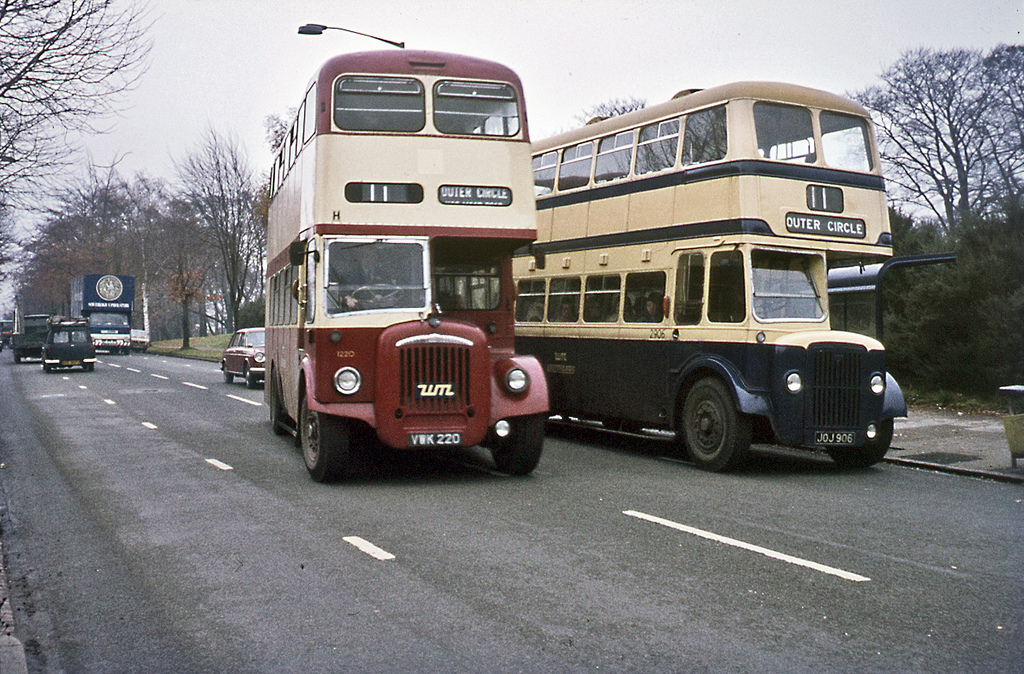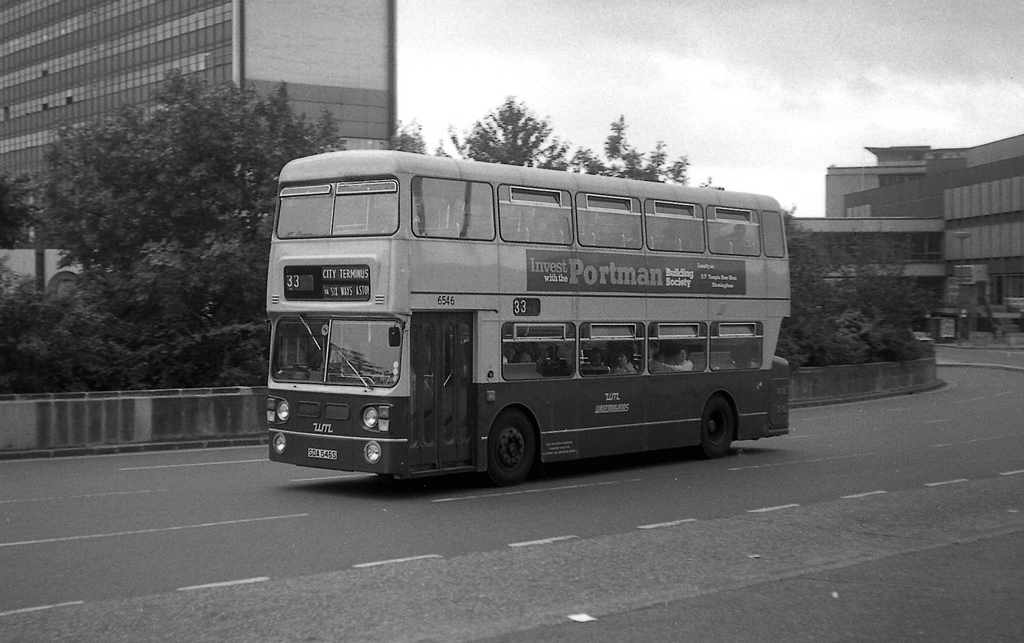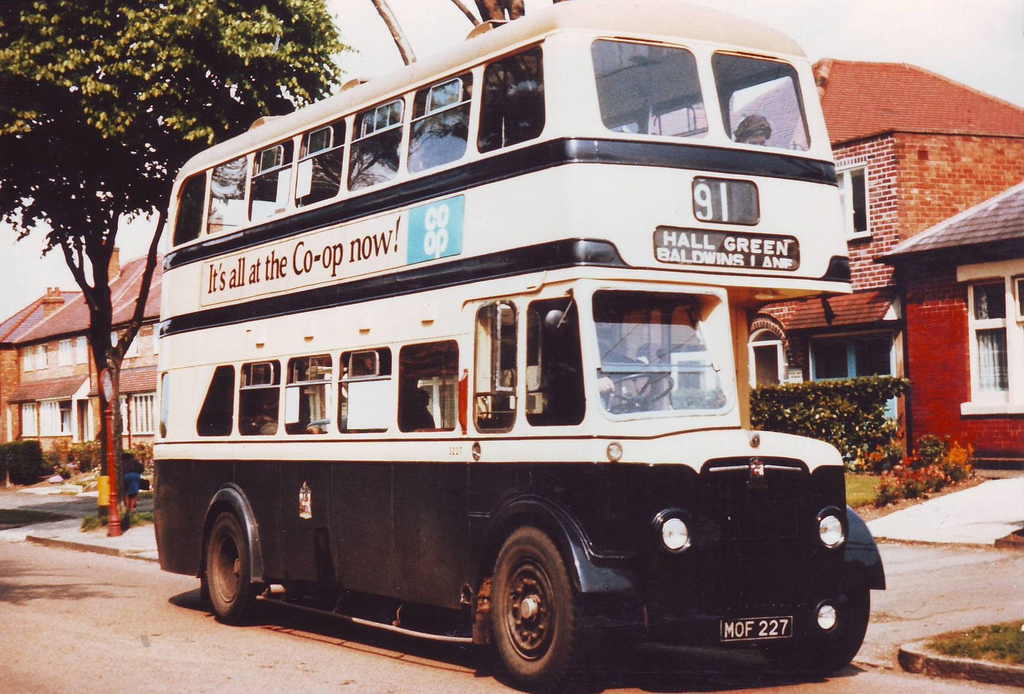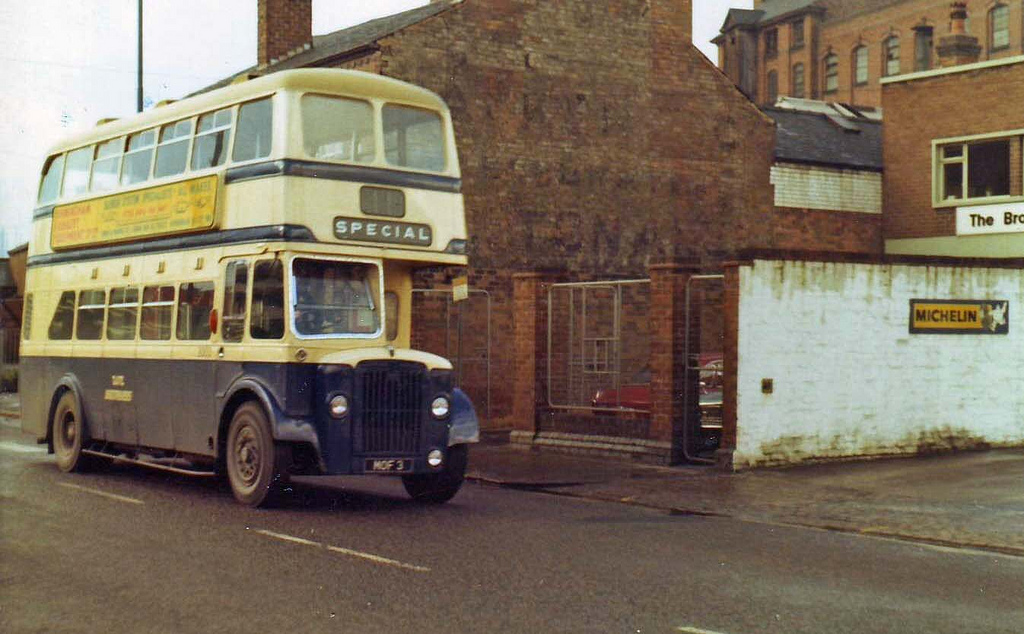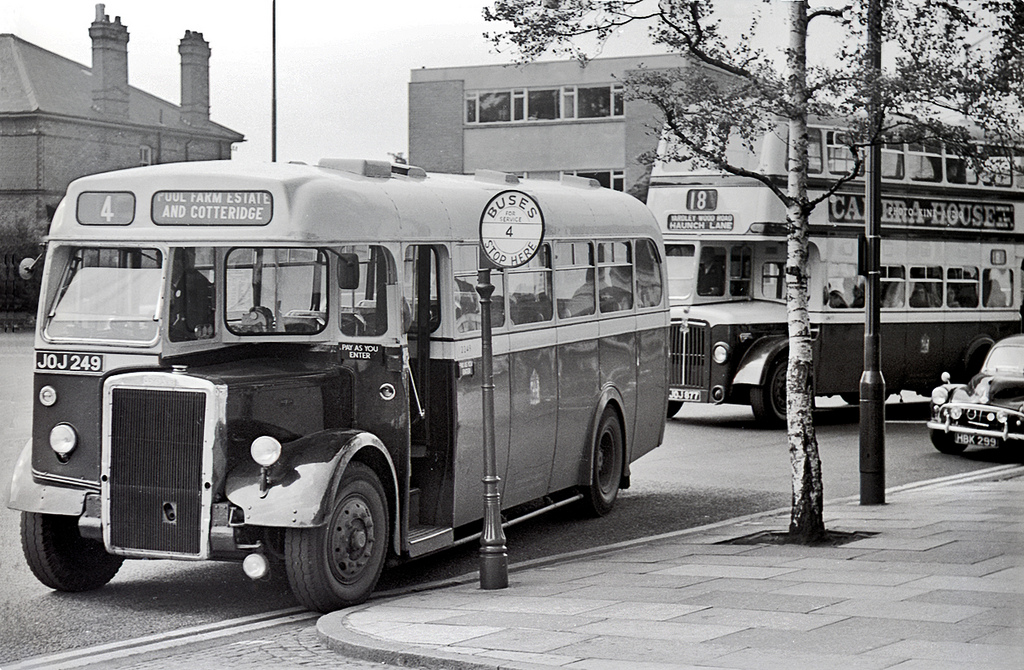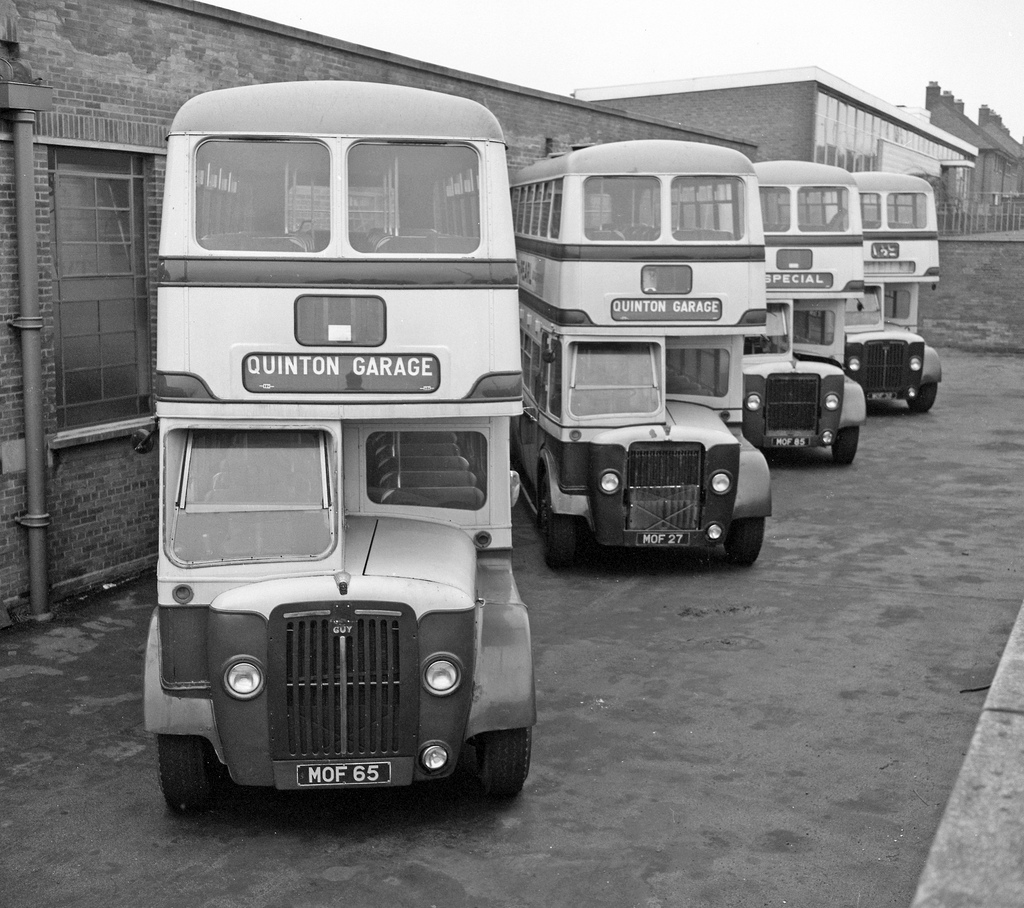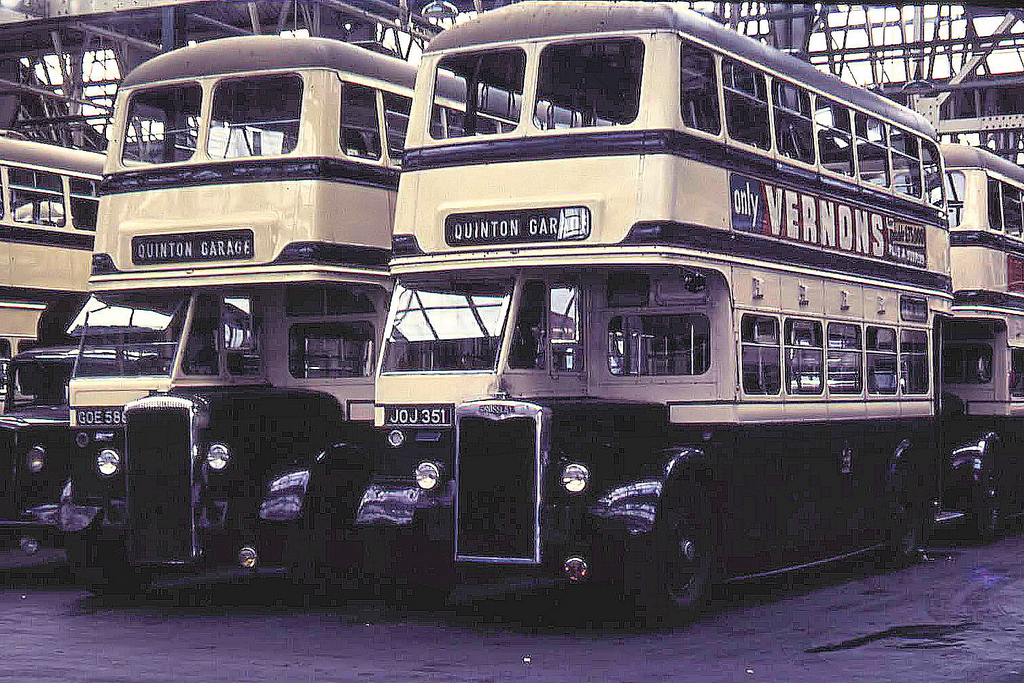The Baldwin photo is in fact the old terminus (BCT days) of the 29A,90/91 route. That is the Baldwin PH in the background. (I know many here like pub pics). On my travels I used to get bags of Smiths Crisps from the off licence there - you remember real potatoes with a bag of salt, rather than artificially flavoured stuff

).
I once had a girl friend - we were both young and had not yet reached the intense stage - who, for a period of time, I saw off to her school from there. They BCT provided buses to Pitmaston school, which incidentally I can't remember seeing.
The Aston Cross bus I suggest was a short working of the Circle route.
The 90 bus, heading for Pheasey Estate was turning around that unusual little island opposite the Baldwin. It was unusually situated, being solely for buses turning around and had a compulsory stop - which can be seen in the photo. This stop, a safety precaution, ensured buses stopped and did not pull into passing vehicles that did not use the island.
My main recollection, of the hill by which the B82 route left Edmund Street and dropped down to The Parade and Sand Pits, was with the gearless Leyland used mainly on the Dudley Road routes. They were bought as replacements, in 1939, for the tramcars (except Lodge Road 32 and Ladywood 33) which got a reprieves. As a youngster I thought the hill steep, but that was before I went to live in Devon!

An AEC Regent on the 1A reminds me that there is some information about the small class of BCT buses already here some place. And finally, yes, a former Coventry bus which has gained the vague Birmingham destination of 'service extra'. I presume it was on the Outer Circle, otherwise, having no displayed route number, few would know where it was going.
